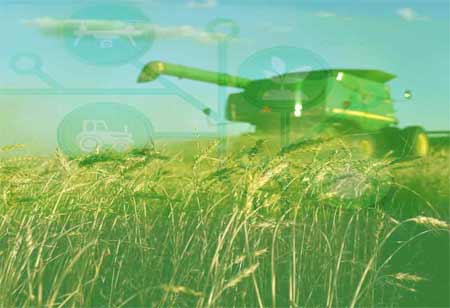Thank you for Subscribing to Agri Business Review Weekly Brief
Assessing the Efficiency of Modern Irrigation Technologies
Water consumption in agriculture is the highest of all sectors, with crop irrigation contributing roughly 70 percent of all water withdrawals worldwide, making it the most water-intensive sector.

By
Agri Business Review | Friday, October 14, 2022
Stay ahead of the industry with exclusive feature stories on the top companies, expert insights and the latest news delivered straight to your inbox. Subscribe today.
The goal is to reduce entry barriers and broaden the adoption of irrigation technologies, allowing for increased economic well-being and climate change adaptation.
FREMONT, CA: Water consumption in agriculture is the highest of all sectors, with crop irrigation contributing roughly 70 percent of all water withdrawals worldwide, making it the most water-intensive sector. The agricultural system will also be greatly affected by many factors, including the increasing demand for food, demographic and economic growth, and the predicted changes in water availability.
A recent body of research has evaluated the "rainfed versus irrigation dichotomy" using different quasi-experimental designs. Small-scale irrigation projects, for instance, have a greater impact on agricultural income and production than large-scale schemes, where the latter affect consumption, income, overall expenditure, asset accumulation, and input expenditures. Many household reports have also described differences in crop yields, diversification, and a reduction in their vulnerability to drought due to living downstream of dams. Increasing agricultural water productivity has been emphasized as a critical factor in addressing these challenges.
Water demands are increasing, and water resources are diminishing. On-farm (e.g., improved irrigation system distribution) and off-farm (e.g., water applications, efficient irrigation technologies) improvements and technological changes are needed. Numerous research disciplines have identified irrigation as a strategic tool for farmers. Irrigation and water resources will be more sustainable. Water-saving, resource-use efficiency, farmer welfare, and poverty reduction are among the many benefits of such improvements. Climate change adaptation and food security and nutrition are two of the key benefits of irrigation.
There has been an increasing body of literature devoted to adopting irrigation technologies, aiming to explain the factors that are driving and hindering the adoption of irrigation technologies due to the large amount of water consumed by agriculture and the many benefits conferred on irrigation systems. According to these studies, farmers' adoption decisions are influenced by social, natural, and financial capital and environmental factors, affecting their decision to adopt new technologies.
Within an irrigation system, however, another question arises concerning the difference between traditional and improved irrigation methods. Modern irrigation systems are economically superior to conventional methods based on the partial budget technique and cost-benefit analysis. Those studies lack a good identification strategy for estimating the effects of such technologies.
FREMONT, CA: Water consumption in agriculture is the highest of all sectors, with crop irrigation contributing roughly 70 percent of all water withdrawals worldwide, making it the most water-intensive sector. The agricultural system will also be greatly affected by many factors, including the increasing demand for food, demographic and economic growth, and the predicted changes in water availability.
A recent body of research has evaluated the "rainfed versus irrigation dichotomy" using different quasi-experimental designs. Small-scale irrigation projects, for instance, have a greater impact on agricultural income and production than large-scale schemes, where the latter affect consumption, income, overall expenditure, asset accumulation, and input expenditures. Many household reports have also described differences in crop yields, diversification, and a reduction in their vulnerability to drought due to living downstream of dams. Increasing agricultural water productivity has been emphasized as a critical factor in addressing these challenges.
Water demands are increasing, and water resources are diminishing. On-farm (e.g., improved irrigation system distribution) and off-farm (e.g., water applications, efficient irrigation technologies) improvements and technological changes are needed. Numerous research disciplines have identified irrigation as a strategic tool for farmers. Irrigation and water resources will be more sustainable. Water-saving, resource-use efficiency, farmer welfare, and poverty reduction are among the many benefits of such improvements. Climate change adaptation and food security and nutrition are two of the key benefits of irrigation.
There has been an increasing body of literature devoted to adopting irrigation technologies, aiming to explain the factors that are driving and hindering the adoption of irrigation technologies due to the large amount of water consumed by agriculture and the many benefits conferred on irrigation systems. According to these studies, farmers' adoption decisions are influenced by social, natural, and financial capital and environmental factors, affecting their decision to adopt new technologies.
Within an irrigation system, however, another question arises concerning the difference between traditional and improved irrigation methods. Modern irrigation systems are economically superior to conventional methods based on the partial budget technique and cost-benefit analysis. Those studies lack a good identification strategy for estimating the effects of such technologies.





